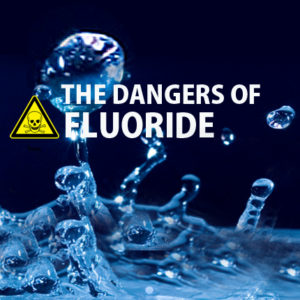From: Al Sears, MD
May 19, 2016
Something you are exposed to every day — something you’ve been told is good for you — is actually a dangerous toxin.
That toxin is fluoride, which is linked to an array of potentially serious health problems — and there’s practically no way to avoid it.
Almost 70% of Americans get fluoride from their water supply… whether they want it or not. And just about all of us get it through toothpaste, mouthwash and processed foods.
 For decades now, water fluoridation has been touted as a safe and effective way to improve dental health — even though there’s no firm evidence to back up that claim.
For decades now, water fluoridation has been touted as a safe and effective way to improve dental health — even though there’s no firm evidence to back up that claim.
In fact, when fluoride is taken internally, it actually damages your teeth. It causes tooth discoloration and dental fluorosis, a deficiency of minerals in tooth enamel.
Even brushing with fluoride is largely ineffective. The protective layer formed on your teeth from fluoride is only the width of a strand of hair.1 That ultra-thin layer is hardly enough to shield your teeth from the acid attacks that cause tooth decay.
And yet the American Dental Association still tells people that fluoride helps prevent cavities in children and adults.
What’s worse is there’s plenty of evidence that fluoride exposure poses wide-ranging health hazards. That includes recent research linking fluoridated water consumption to thyroid dysfunction.2
Overexposure to fluoride also contributes to arthritis, bone fracture, gastrointestinal problems, bone cancer and even brain damage.3
No doubt that’s the reason the U.S. government lowered its recommended dosage for fluoride for the first time in 2012.
But every American is still overexposed to fluoride. The good news is there’s an effective natural antidote.
Iodine to the Rescue
Taking iodine is not only the best way to rid your body of dangerous fluoride, but also other toxins such as bromide, chlorine, perchlorates and heavy metals.
Our ancestors had all the iodine they needed. In ancient times, the water and soil were rich with minerals. Plants absorbed the iodine. Animals ate the plants. Humans hunted, fished, and ingested the meat and plants.
Unfortunately, that’s no longer the case.
The easiest way to get enough iodine is to season your food with iodized sea salt. You can also try eating edible seaweed, such as wakame and nori, which are high in iodine.
You’ll also find iodine in cod, shrimp, fish sticks, tuna (canned in oil), cow’s milk, baked potatoes with peel, boiled eggs, cooked navy beans and baked turkey breast.
Or you can supplement. I recommend getting 300 mcg of iodine daily for increased energy levels and optimal fluoride protection. Make sure you also get enough of the trace element selenium. Your body needs it to utilize iodine.4 Taking too much iodine without selenium can lead to goiter and other thyroid problems.5
To Your Good Health,
Al Sears, MD, CNS